Planning Principles
Our Planning Principles provide a foundation for design work, policies, and related recommendations in the Campus Master Plan, and guide the development of the Concept Plan and Plan Frameworks.

1. Indigenous
Provide a strong sense of belonging and identity within the Campus for our Indigenous Community
BU should embrace the opportunity to engage with its Indigenous Community through a series of placemaking initiatives to create a sense of belonging and identity. This may include cross-cultural listening and learning sessions and recognizing Indigenous history and cultural heritage through art, events and programs, landscape design, and the location of Indigenous structures and features.
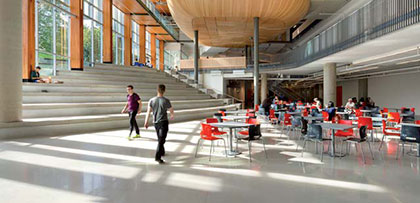
2. Unique
Cultivate and showcase Brandon University’s unique identity, sense of place, and commitment to innovative student-centred pedagogy.
All aspects of the Campus, from buildings, to open spaces, paths, and interior spaces, should convey a unique, and high-quality, sense of place. The Campus design and character should reflect BU’s ambition to continue to strive for excellence as a student-centered institution of choice, while supporting its growth as a centre for innovative research and creative activity.
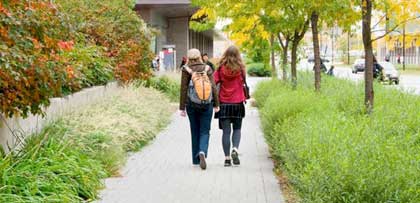
3. Welcoming
Create an inclusive, accessible, and welcoming campus that is integrated with the community around it.
BU should design the campus to break down physical, social, economic, and cultural walls and facilitate pathways to a university education and community engagement. This includes creating a physically accessible campus with welcoming frontages to all surrounding areas, as well as providing the spaces and services to support people from a diversity of social, economic, and cultural backgrounds.
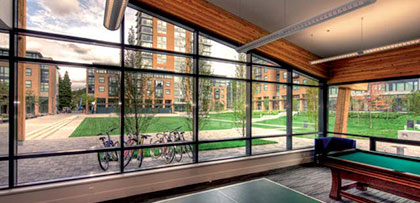
4. Safe
Support a safe and inviting campus environment.
BU should be a leader in providing a safe and inviting campus environment and public realm. Its physical design should include beautiful and attractive internal and external social gathering spaces, pathways, corridors, and streets that are interconnected, well-illuminated, and universally accessible, with clear sightlines, and intuitive wayfinding. All Brandon University locations should support a sense of safety and inviting students, faculty and staff, and community members to engage in post-secondary education and community development.
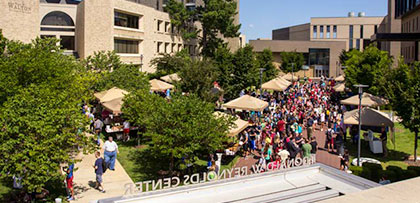
5. Engaged
Strengthen relationships and explore new opportunities to connect with, and be supportive of, other institutions, the broader community, and the city.
BU should continue to find ways to engage and connect with the broader community, including individuals living in Brandon, and local businesses, leaders, artists, and community groups. Stronger relationships with other institutions and organizations will provide an opportunity to position BU as a hub of activity and catalyst for positive change in Brandon.
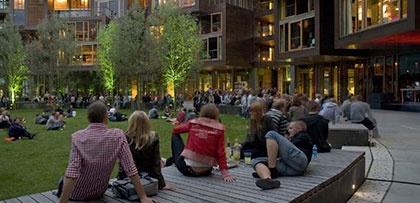
6. Vibrant
Provide a range of spaces, places, and amenities to support a vibrant and animated campus environment at different times of the day and year.
BU should create a diverse range of places, amenities, and services that meet a variety of needs for different users, including for Indigenous peoples, and that help to sustain a sense of activity, excitement, and energy on the Campus throughout the day, evening, and at all times of the year, especially during the winter.
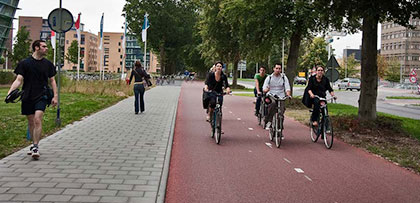
7. Healthy
Foster a campus environment that supports individual and community wellbeing and healthy, active living.
BU should take steps to support the overall health and well being of the members of the Campus’ community through the design and provision of spaces, programming, and amenities. This may include initiatives such as providing spaces to host ceremonial events in keeping with Indigenous peoples’ tradition and supporting active living.
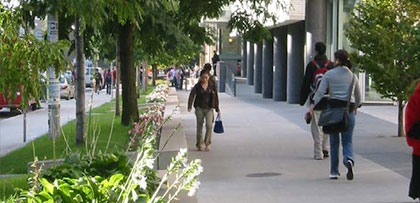
8. Walkable
Design a compact, walkable environment that implements a sustainable approach to campus development and growth.
BU should guide the continued physical evolution of its campus growth in a compact manner, one that supports walking by creating safe and attractive, pedestrian-friendly spaces with short travel distances between buildings. It should support a multi-modal transportation strategy that promotes active transportation and environmentally-friendly options. These include walking, cycling, and transit in between campuses and to other institutions or satellite partnership locations.
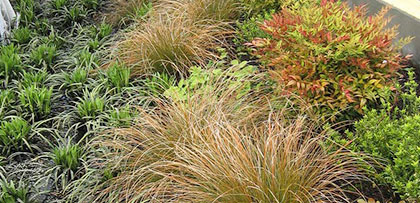
9. Sustainable
Implement sustainable practices and design initiatives on campus.
The design of buildings, open spaces, and movement networks should implement sustainable design strategies and approaches that reduce waste and energy use. Other sustainable practices, strategies, and programs that have a positive influence on day-to-day life should also be promoted on the Campus.
